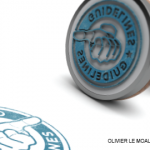Dr. Caplan added that once extrinsic factors contributing to D2M disease are identified, the relative size of each of these factors needs to be considered as well as how they combine and/or interact to affect the individual patient.
Distinguishing FM from Active SpA
How do we know when D2M disease is driven by active inflammation, and how do we know when it’s actually due to noninflammatory causes like FM?
Dr. Caplan walked us through a framework for how to approach this million-dollar question. He joked, “I subtitled this section of my talk ‘A Case Study in How to Practice Medicine.’ Perhaps this a little obnoxious, but that’s what I did.”
To distinguish FM from active SpA, think through:
- Do symptoms vary with dosing intervals of current therapy (“off phenomenon”)? Do pain symptoms correlate with other manifestations of disease (e.g., irritable bowel syndrome vs. inflammatory bowel disease, uveitis vs. headache).
- Physical Exam. Dr. Caplan noted that combination physical exam maneuvers are more helpful than single physical exam maneuvers because they can help increase the positive likelihood ratio that a finding correlates with a diagnosis.2
- “Erythrocyte sedimentation rate and C-reactive protein are helpful measures of disease activity in SpA,” he said.
- He noted, “MRI [magnetic resonance imaging] of the sacrum has a critical role in distinguishing the presence of active disease, and I believe that this is highly underutilized.” Point-of-care ultrasound is also useful in assessing for peripheral synovitis and enthesitis.3
- Integration of these. In other words, none of the clues above can be evaluated in a vacuum. Clinicians must look at the whole picture.
Ultimately, Dr. Caplan offered, “Maybe differentiating [FM from active disease] might not be the ideal approach because you’re starting with a patient who has pain, and you’re trying to ascribe it to a single cause. It may make more sense to independently look at each of these entities, and treat them all in kind. The presence of one doesn’t exclude the treatment of the other.” This point was specifically articulated in the 2016 revisions to the 2010/2011 fibromyalgia diagnostic criteria.4
As for final thoughts to differentiate FM from active SpA, Dr. Caplan said, “In many cases we have a lot of these techniques at our disposal. The real problem is implementation.”
Treatment of Refractory, D2T Disease
Dennis McGonagle, FRCPI, PhD, professor, Leeds Institute of Rheumatic & Musculoskeletal Medicine, St James Hospital, University of Leeds, U.K., spoke on Therapy Selection in Difficult to Manage Spondyloarthritis, focusing on the subset of D2M patients who fall under the D2T category. These are the patients who have failed multiple therapies with different mechanisms of action. “The big issue we face when treating these patients is immune heterogeneity,” Dr. McGonagle said.


